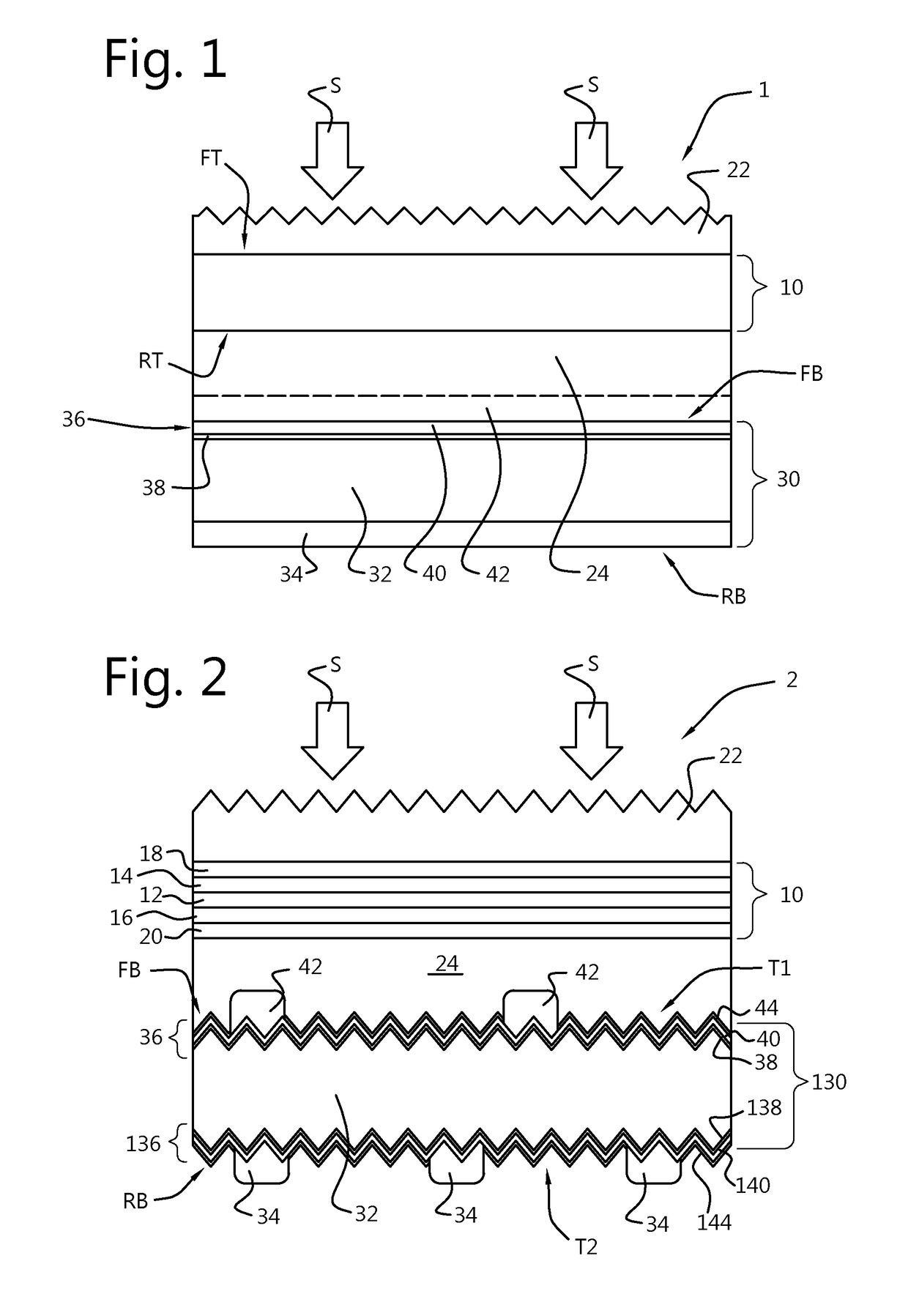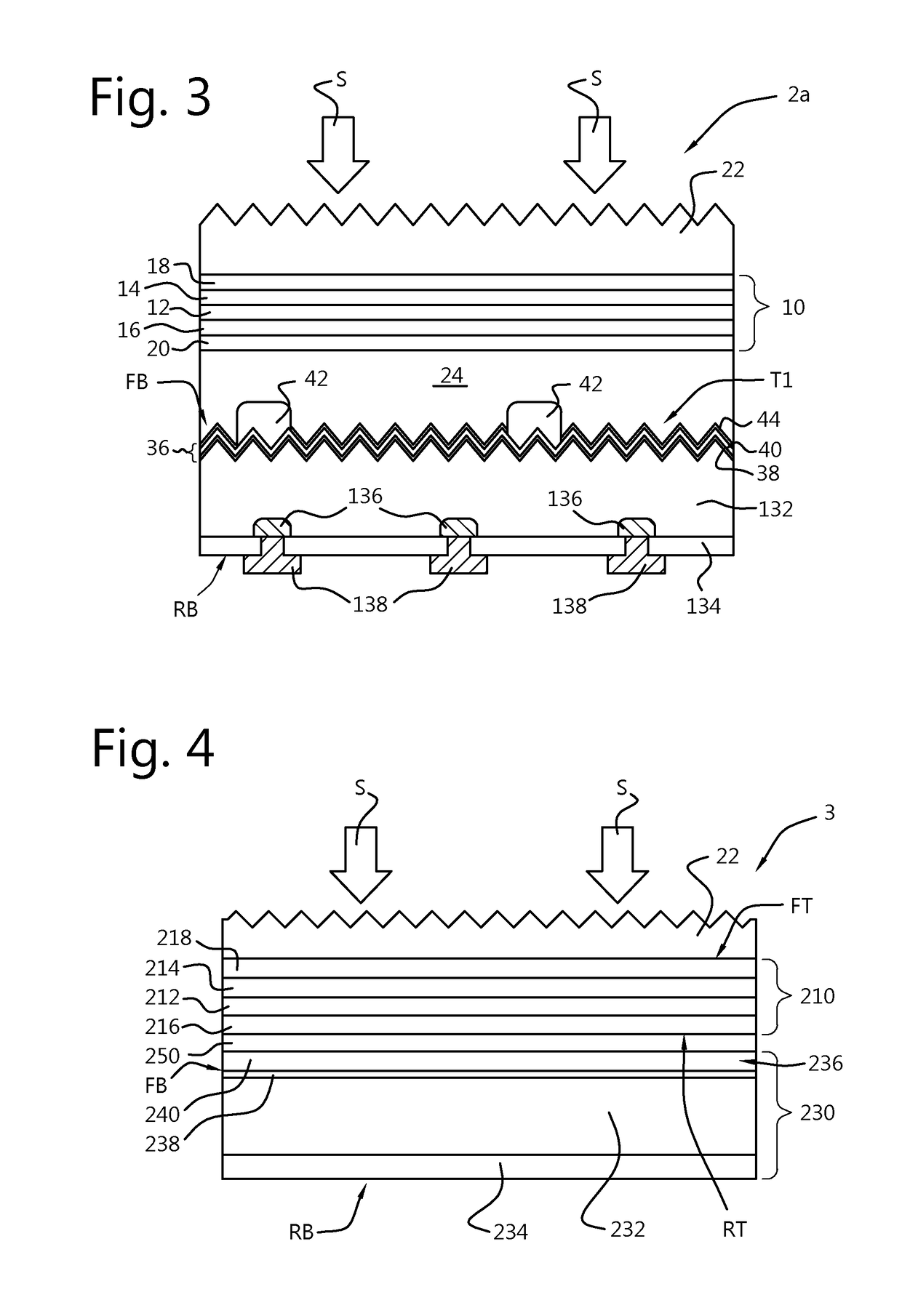Hybrid tandem solar cell
a solar cell and tandem technology, applied in the field of tandem solar cells, can solve the problems of low thermal robustness, inability to regularly solder cells for interconnection, and inability to process the top cell in case of a 2-terminal tandem structure, etc., to achieve improved thermal robustness of the bottom solar cell, reduce production costs, and improve thermal robustness
- Summary
- Abstract
- Description
- Claims
- Application Information
AI Technical Summary
Benefits of technology
Problems solved by technology
Method used
Image
Examples
Embodiment Construction
[0045]According to the present invention, the tandem solar cell comprises a stack of a top solar cell (or top photovoltaic device) and bottom solar cell (or bottom photovoltaic device), in which the top solar cell is arranged on top of the bottom solar cell. The top solar cell and the bottom solar cell are stacked in a manner that the rear surface of the top solar cell is stacked on the front surface of bottom solar cell.
[0046]The front surface refers to the surface of the respective solar cell that during use is substantially facing a radiation source (the sun). The rear surface refers to the surface of the respective solar cell that during use of the solar cell, is turned away from the radiation source.
[0047]The band gaps of the top solar cell photovoltaic material and the bottom solar cell photovoltaic material are configured in such a manner that the top solar cell is substantially transparent for radiation with wavelengths which are to be absorbed by the bottom solar cell. The ...
PUM
 Login to View More
Login to View More Abstract
Description
Claims
Application Information
 Login to View More
Login to View More - R&D
- Intellectual Property
- Life Sciences
- Materials
- Tech Scout
- Unparalleled Data Quality
- Higher Quality Content
- 60% Fewer Hallucinations
Browse by: Latest US Patents, China's latest patents, Technical Efficacy Thesaurus, Application Domain, Technology Topic, Popular Technical Reports.
© 2025 PatSnap. All rights reserved.Legal|Privacy policy|Modern Slavery Act Transparency Statement|Sitemap|About US| Contact US: help@patsnap.com



